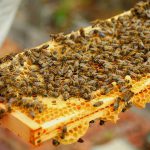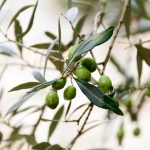
Introduction
- Fungiculture is the process of producing food, medicine and other products by the cultivation of mushrooms and other fungi (like truffles). Unlike plants which depend on the sun, mushrooms rely on their growing medium for food and energy. Examples of this food-and-energy source are compost, mulched hay, sawdust and wood chips.
- Four important mushroom species are grown commercially. These are the common cultivated mushroom, Agaricus bisporus, the Shiitake mushroom, Lentinula edodes, the oyster mushroom, Pleurotus ostreatus and the paddy-straw mushroom, Volvariella volvaceae. The common cultivated mushroom is the most important species with the greatest estimated global production.
- Most mushrooms found in supermarkets have been commercially grown on mushroom farms i.e. in controlled, sterilised environments. Separating edible from poisonous species requires meticulous attention to detail, since there is no single trait by which all toxic mushrooms can be identified, nor one by which all edible mushrooms can be identified. The term ‘gourmet mushroom’ generally refers to any mushroom except the white and brown button mushroom commonly found in supermarkets.
- Approximately 300 mushroom species have known medicinal properties, and another 1800 with potential medicinal properties have been identified. Extracts of medicinal mushrooms are used to increase disease resistance and to normalise body functions.
- Mushrooms can also be used for dyeing wool and other natural fibres.
Find grower notes on http://mushroominfo.co.za.
Contents
International business environment
Visit www.isms.biz, website of the International Society for Mushroom Science
- The global mushroom market size was valued at USD 50.3 billion in 2021 and is expected to expand at a compound annual growth rate (CAGR) of 9.7% from 2022 to 2030.
- The increasing vegan population demanding a protein-rich diet around the globe is expected to be a key driver for the market over the forecast period.
- Mushrooms are considered a superfood owing to their nutritional contents.
- An increasing number of consumers focus on organic and unprocessed food consumption to gain maximum health benefits of the product. Processed types include dried, frozen, canned, pickled, and powdered forms. Additional processing such as canning, freezing, or drying is essential to extend the shelf life of mushrooms.
Source: Grand View Research. 2022. Mushroom Market Size, Share & Trends Analysis Report By Product (Button, Shiitake, Oyster), By Form, By Distribution Channel, By Application (Food, Pharmaceuticals, Cosmetics), By Region, And Segment Forecasts, 2022 - 2030. Available at www.grandviewresearch.com/industry-analysis/mushroom-market
For the newcomer
- Find the grower guides and other material under the “Websites & publications” heading later on this page.
Role players
Companies
Representative Bodies
South African Mushroom Farmers’ Association –
www.mushroominfo.co.za
Find recipes and, under the "Mushrooms: Growing, Sustainability & Facts" option, grower notes.
Training, Consulting & Research Service Providers
Community, NGO and NPO Service Providers
The Future of Hope –
www.thefutureofhope.org
The Future of Hope is an NGO that works worldwide growing mushrooms.
Further reference:
- The South African National Collection of Fungi, which houses approximately 60 000 specimens, is known nationally and internationally under the acronym PREM. The name PREM is derived from the city in which the collection is situated, Pretoria (PRE), and the M defines the collection as being mycological. The ARC-PHP is currently the custodian of the collection. For further information contact Dr A Jacobs-Venter jacobsr [at] arc.agric.za.
Websites and publications
- Available from the ARC-Agricultural Engineering (ARC-AE) is the publication “Agro-processing of Olives and Legumes (green peas, green beans, cowpeas, lentils, olives, peanuts, mushrooms)”. Call 012 842 4017 or visit www.arc.agric.za.
- Publications from the ARC-PHP (Plant Health and Protection) include: (i) Mushrooms and Toadstools / Sampioene en Paddastoele (ii) Medically Important Spiders and Scorpions of Southern Africa. Write to booksales [at] arc.agric.za or infopri [at] arc.agric.za.
- Gryzenhout M. 2021. Pocket Guide Mushrooms of South Africa. Cape Town: Penguin Random House.
- Gryzenhout M. & Goldman G. 2019. Mushrooms and Other Fungi of South Africa. Cape Town: Random House Struik.
- Step by Step Guide on growing mushrooms ISBN 978-0-620-42224-6. There is also a three part DVD set. Order at www.ecoafro.com.
- Find the eBook Mushroom Cultivation Business and Marketing Secrecies by Adriaan Smit and Markus Peter-Erik Janssens at www.mushroomacademy.com.
- Find the notes at Precision Irrigation Academy website, www.netafim.co.za/crop-knowledge/mushroom.
- Commercial mushroom production in South Africa. Bulletin 418. A Eicker. Department of Botany. University of Pretoria.
- Find the following publications at www.amazon.com: (i) Gryzenhout, M. 2012. Pocket Guide: Mushrooms of South Africa. (ii) Stamets, P. 2000. Growing Gourmet and Medicinal Mushrooms. Third edition. Also at Amazon are several titles on truffles, including Brown, G., Hall, I.R., Zambonelli, A. 2008. Taming the Truffle.
- Find the videos on YouTube like “How to Grow Mushrooms” and “How to Grow Truffle Trees”.
Some articles
- Read the Agribook blog “Hell for leather … er, mushrooms” about vegan leather being made from mushrooms.
- Jaynes C. 2023, April 10. “Cultivating Mushrooms by Trees Could Feed Millions While Mitigating Climate Change, Research Finds”. EcoWatch. Available at www.ecowatch.com/mushroom-growing-food-climate-change.html
- Belot H. 2023, March 15. “Oyster mushrooms expected to break down toxins and microplastics in cigarette butts in Australian trial”. The Guardian. Available at www.theguardian.com/australia-news/2023/mar/16/oyster-mushrooms-expected-to-break-down-toxins-and-microplastics-in-cigarette-butts-in-australian-trial
- Richard E. 2023, February 15. “‘Mushroom production needs dedication'”. OFM. Available at www.ofm.co.za/article/news/321965/mushroom-production-needs-dedication
- Coleman A. 2022, December 10. “Meticulous management drives success for mushroom grower”. Farmer’s Weekly. Available at www.farmersweekly.co.za/agri-business/agribusinesses/meticulous-management-drives-success-for-mushroom-grower/
- Botha L. 2022, October 23. “KZN couple cash in on growing demand for mushroom spawn”. Farmer’s Weekly. Available at www.farmersweekly.co.za/agri-business/agribusinesses/kzn-couple-cash-in-on-growing-demand-for-mushroom-spawn/
- Kriel G. 2022, August 9. “Slow turnaround for SA’s mushroom market”. Farmer’s Weekly. Available at www.farmersweekly.co.za/agri-news/south-africa/slow-turnaround-for-sas-mushroom-market/
- Corrigall M. 2022, June 13. “Forage for edible mushrooms in Cape Town”. Mail & Guardian. Available at https://mg.co.za/friday/2022-06-13-forage-for-edible-mushrooms-in-cape-town
- Eksteen H. 2022, June 1. “Limpopo se eerste vroue-sampioenboer maak lig van die duisternis” [Limpopo’s first female mushroom farmer is optimistic]. Grond Tot Mond. Available at https://grondtotmond.com/2022/06/01/chanmar-sampioene
- Coetzee M. 2022, May 23. “Truffles: black gold for South African farmers”. Farmer’s Weekly. Available at www.farmersweekly.co.za/crops/field-crops/truffles-black-gold-for-south-african-farmers
- Francke R. 2021, April 17. “Success mushrooms for farmer with a dream”. IOL. Available at www.iol.co.za/business-report/entrepreneurs/success-mushrooms-for-farmer-with-a-dream-530e78fd-4e86-5206-8823-f47692a61d9a
- Carte Blanche. 2021, March 17. “Don’t Trifle with Truffles”. Available at www.youtube.com/watch?v=B8TOqYOgp3M
- Rao M. & Klerken J. 2020, August 25. “Mushroom farming & processing: Ask the expert”. Food Unfolded. Available at www.foodunfolded.com/article/mushroom-farming-processing-ask-the-expert
- Skyer M. 2019, November 28. “How To Grow Mushrooms From Plugs On Logs”. Rural Sprout. Available at www.ruralsprout.com/grow-mushrooms-from-plugs-on-logs/
- Hartebeest C. 2019, September 6. “Mushroom farmer works to make other families self-sustaining”. Food for Mzansi. Available at www.foodformzansi.co.za/mushroom-farmer-works-to-make-other-families-self-sustaining/
- Reporter. 2019, February 20. “Local mushroom farmer named Pick n Pay’s Small Supplier of the Year”. Bizcommunity. Available at www.bizcommunity.com/Article/196/162/187595.html
- Van der Watt, E. 2018, November 8. “Going underground with a mushroom farmer”. Food For Mzansi. Available at www.foodformzansi.co.za/weird-and-wonderful-going-underground-with-a-mushroom-farmer/
- Ferreira J. 2018, February 19. “Oyster mushroom farming: an affordable start-up”. Farmer’s Weekly. Available at www.farmersweekly.co.za/agri-business/agribusinesses/oyster-mushroom-farming/
- Roets, A. 2017, July 5. “Why men need mushrooms”. The Citizen. Available at http://citizen.co.za/lifestyle/your-life-things-to-do/lifestyle-food-and-drink-your-life-things-to-do/1561253/men-need-mushrooms/
- Citizen reporter. 2017, May 30. “Real men eat mushrooms”. The Citizen. Available at http://citizen.co.za/lifestyle/your-life-entertainment-your-life/1527725/real-men-eat-mushrooms/
- Du Preez, J. 2016, November 18. “Mushroom production tips from a Boland farmer”. Farmer’s Weekly. Available at www.farmersweekly.co.za/crops/field-crops/mushroom-production-tips-boland-farmer/
- Mahan J. 2015, July 3. “Mushroom Cultivation”. Permaculture News. Available at http://permaculturenews.org/2015/07/03/mushroom-cultivation/
- Mashala, P. 2014, March 5. “With mushroom & moringa on the side”. Farmer’s Weekly. Available at www.farmersweekly.co.za/crops/field-crops/with-mushroom-moringa-on-the-side/



Share this article
Recommended Posts







